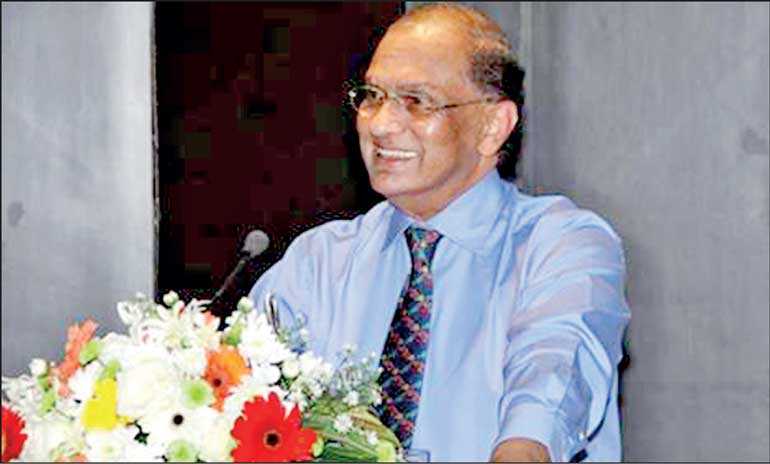Thursday Jan 01, 2026
Thursday Jan 01, 2026
Wednesday, 7 October 2020 00:02 - - {{hitsCtrl.values.hits}}

Coach, Mentor and Consultant Ronnie Peiris
The Daily FT met up with Ronnie Peiris, Coach, Mentor and Consultant, in understanding the contents, and context of the workshop he is conducting on ‘Capital Budgeting – the Investment Decision’ on 27 October at the Cinnamon Lakeside (see www.ronniepeiris.com). He highlighted the following based on his 45 years of experience in projects ranging from $ 1 billion to $ 5 million in his previous positions as the Group Finance Director, John Keells Holdings, PLC, and the Managing Director (before the Finance Director), Anglo American Corporation, (Central Africa) Ltd.
Capital budgeting – the investment decision: crucial
The capital budgeting – investment decision is, perhaps, the most important decision taken by a board and top leadership given the significant amount of funds involved, the often-long gestation, its relative irreversibility, and the impact on share price.
The primary responsibility of a board and top leadership of a company is to maximise
shareholder/investor wealth by increasing the current price of shares and consequently the market value of the shareholder’s/investor’s stockholding. Accordingly, in an ideal world, managers would make all positive – Net Present Value (NPV) investments. In fact, they should only make positive – NPV investments.
Whether it be constructing a new factory, launching a new product or service, evaluating the merits of an acquisition, or establishing a new process, corporates place great reliance on their capital budgeting techniques and governance process in making these high-stake decisions.
A quick study of the Sri Lankan stock market and annual reports reveals little meaningful correlation between capital expenditure and growth in capital expenditure with Return on Invested Capital (ROIC). The study shows that many organisations struggle to achieve consistently positive results. Often, the main contributor to this situation is bad investment.
Investment evaluation in practice – many flaws, numerous pitfalls
Given that most companies have pre-established goals and priorities and do take reasonable steps to inspire a shared vision and motivate their employees, the non-achievement of project goals, even during normal periods of operations, and the good times pre-COVID, may seem rather strange.
Whilst there is overwhelming evidence to show that top management, and, to a lower degree, the board, are not perfect servants and/or agents of the shareholders/investors, the evaluation of capital projects is fraught with many errors, these being;
Weighted Average Cost of Capital (WACC) to all projects irrespective of degree of risk?
The increased importance of value adding capital expenditure, post COVID-19
The COVID-19 crisis has forced most firms to reset their capital expenditure plans. Regardless of whether business has grown, slowed, or experienced closures, or prepared for a return to something approaching normalcy, all firms and their capital projects are undoubtedly affected by the crisis.
The availability of materials and labour has decreased. Travel restrictions, and the psychological effects of COVID have critically affected the airline, travel, hospitality and restaurant industries. Physical distancing measures have disrupted the operations of construction sites and fabrication yards.
Freeing up cash by deferring planned capital expenditure is probably the immediate, and spontaneous, response to this situation. In this light, there is an urgent need to review the existing portfolio. It is essential, and critical, that Leaders identify the projects which promise the largest potential and the projects which are not essential in the anticipated future. The capital budgeting – investment decision has never been more important.
Investment evaluation – succumbing to human bias
Capital budgeting/planning decisions are not only negatively affected by the errors highlighted before, but are often affected by biases.
Our own experiences, and behavioural sciences, suggest that individuals, particularly at senior levels, are often biased and allow such biases override the logic of technique and science. Such individuals unduly influence the project evaluation process through their “gut feel” optimism of certain courses of action over other courses favoured by the majority, their over reliance on specific pieces of information and “the so-called experts” and their view of the project through a narrow, and blinkered, lens. Decision makers, CFOs and heads of corporate finance must focus on data and not just narratives and gut feel.
Investment decisions frequently suffer through “expert bias”. Decision makers are loathe to challenge the expert. For example, the head of marketing knows what the customer wants; the head of information technology insists on a specific solution; the head of production is adamant in buying a particular type of plant and equipment et cetera. Yes, it is acknowledged that these persons have been employed for their expertise. But the top management team and other decision makers must know the art of challenging these opinions.
Girding the decision makers and CFOs – Mastering the hard and soft skills of investment evaluation
In this context, it is important that the decision-makers and CFOs and heads of corporate finance, in particular, are girded appropriately to penetrate the veil of bias by challenging the underlying assumptions and/or presumptions by asking the uncomfortable questions and applying the appropriate evaluation techniques.
To do this, they must have a practical understanding of the strengths and weaknesses of different techniques of evaluation and be “street smart” in avoiding the common pitfalls which normally beset the logic of the decision. Most importantly, they must learn how to deal with the bias of “forceful” bosses.
The workshop aims to deliver all this.